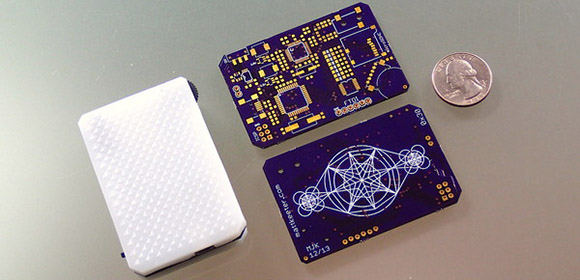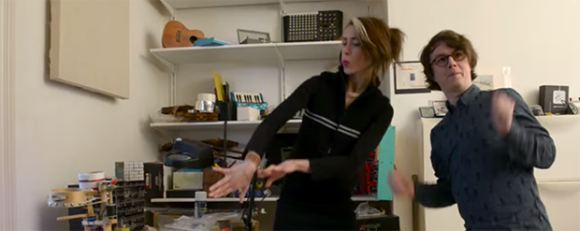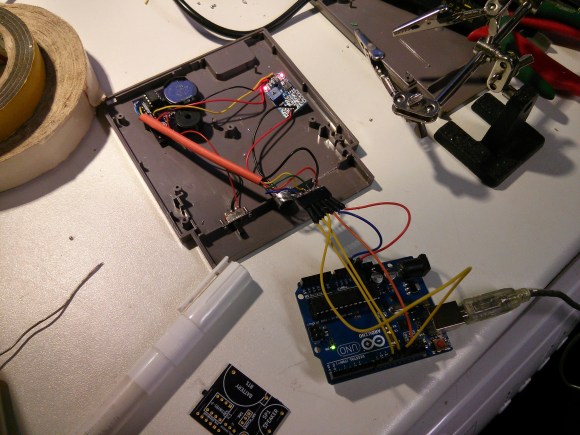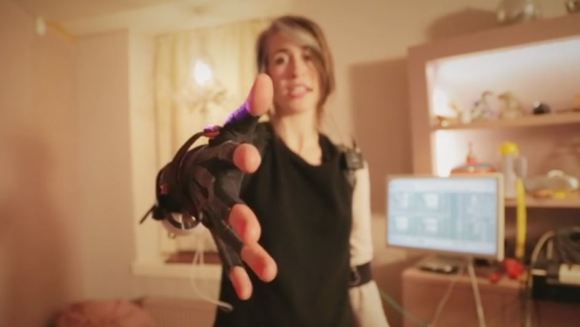
[Matt]’s been working on a small hombrew MP3 player, and although it’s not much more useful than an iPod Shuffle, sometimes that’s all you need. Besides, it turned out to be a beautiful project, completely custom, and a great example of what a high resolution 3D printer can do with an enclosure design.
Inside Bumpy is an ATMega32u4 with a VS1003 MP3 codec IC. The device is powered by a 1000mAh lithium battery, and the user interface is an exercise in simplicity; a single click/scroll wheel changes the volume, toggles play and pause, and selects the next or previous track. Eight LEDs mounted in the center of the board glow through the case for status, volume, and interface feedback.
By far the most impressive part of Bumpy is the case. It was printed at [Matt]’s place of employment – Formlabs – in white UV curing resin. The pictures show a surface finish that would be difficult to replicated on a squirting plastic style 3D printer, with a textured, bumpy surface that inspired the name.

















